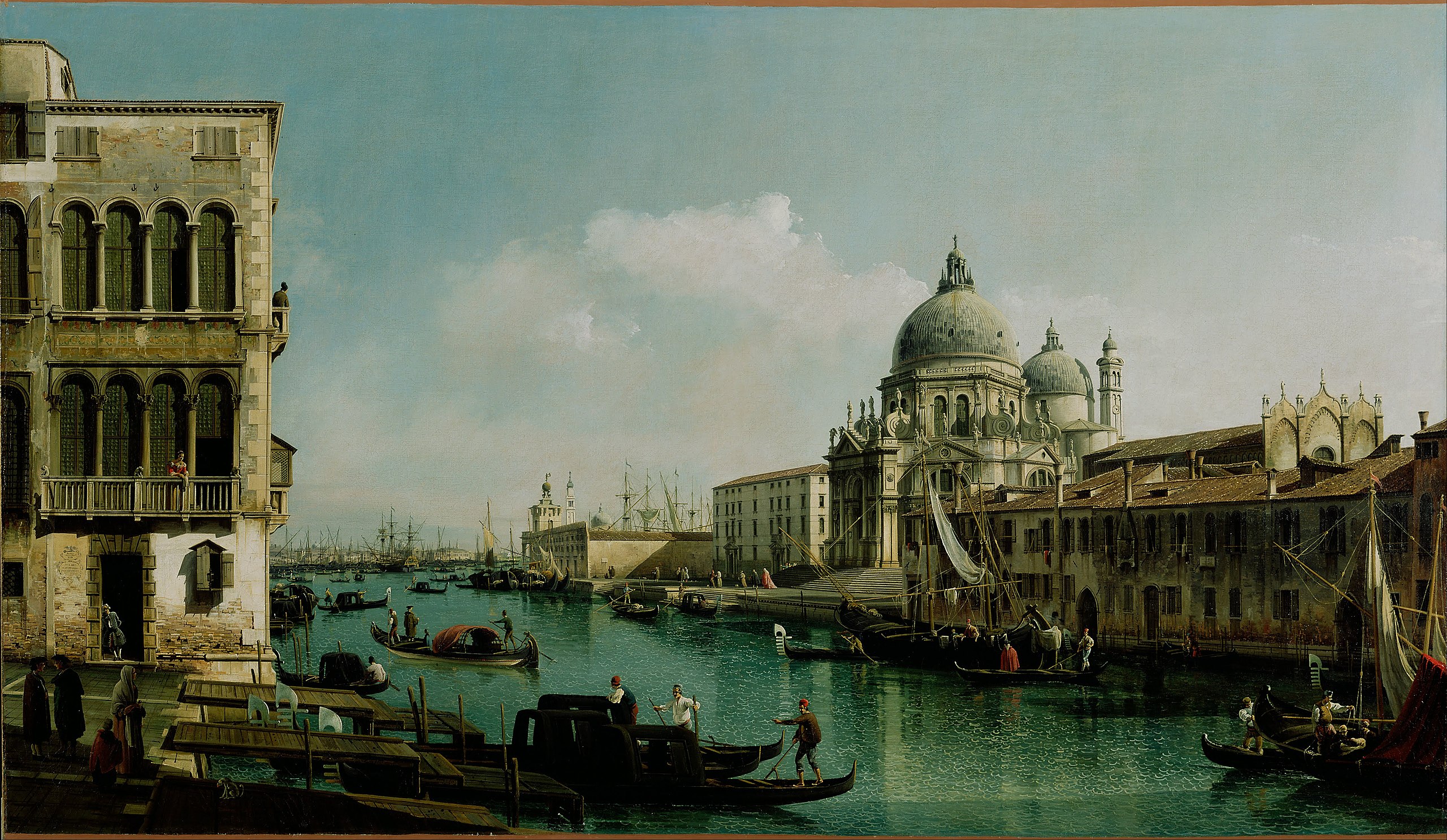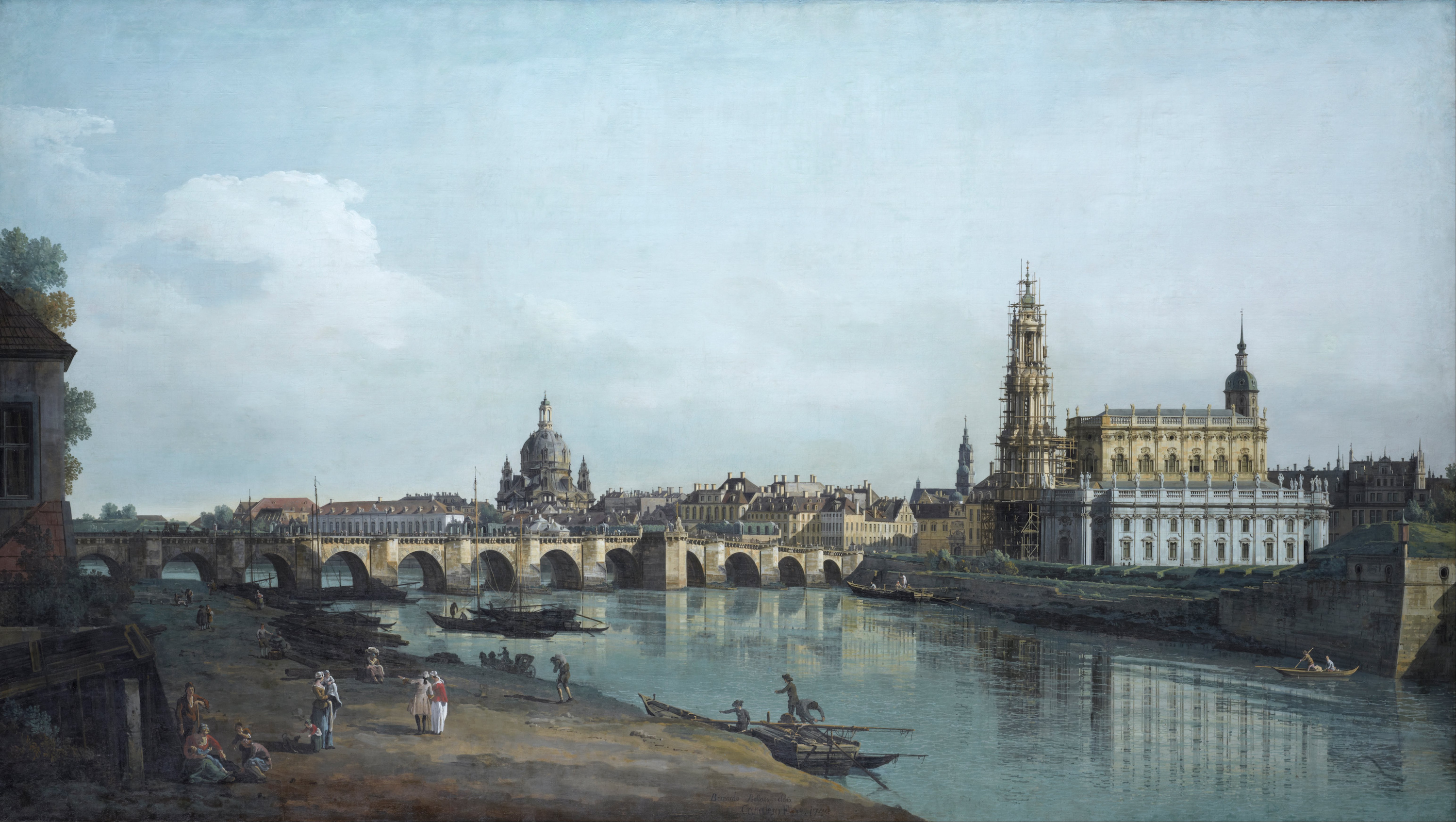Bernardo Bellotto was the nephew of Canaletto, a painter renowned for his idealized views of Venice. Together they produced many painted vistas for tourists who stopped in Venice on their Grand Tour of Italy and purchased these types of paintings as souvenirs and reflections of their cultural sophistication. In this architectural record of Venice and the Grand Canal, Bellotto presented a cross-section of Venetian society going about business on a sunny morning.
Light from the east falls upon the Palazzo Pisani Gritti with its arched windows and painted facade. A Venetian devotional box housing various types of religious icons hangs below the arched windows of the building at the left. Such boxes were usually placed on a building right next to the canal so that passers-by could pause for a moment of prayer upon leaving or arriving. Its image reflected in the canal, the Baroque church of Santa Maria della Salute dominates the right bank. Next to it, behind a shadowy row of houses, stands the Gothic facade of the Abbey of San Gregorio. On the far right is the Dogana or customs building. Gondolas and ferries, modes of transportation still in use today, traverse the water between the two banks. The mouth of the canal, where seafaring vessels leave or enter the city, is visible in the distance.


 Bernardo Bellotto (Canaletto)
Bernardo Bellotto (Canaletto)